Pushkin House exhibition ‘Russian Types & Scenes’
May 13th, 2015 by Richard Davies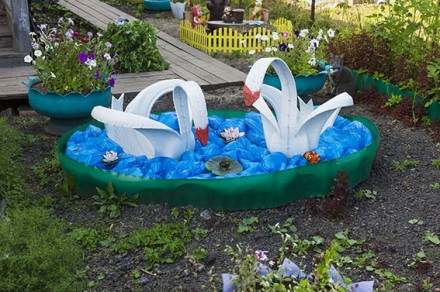
Swan Lake, Vytegra, August 2014
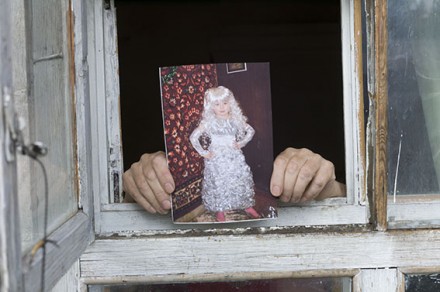
Snowflake, Kargopol, August 2013
19th June ŌĆō 20th September 2015, Private View 18th June, 7pm.

Swan Lake, Vytegra, August 2014

Snowflake, Kargopol, August 2013
19th June ŌĆō 20th September 2015, Private View 18th June, 7pm.
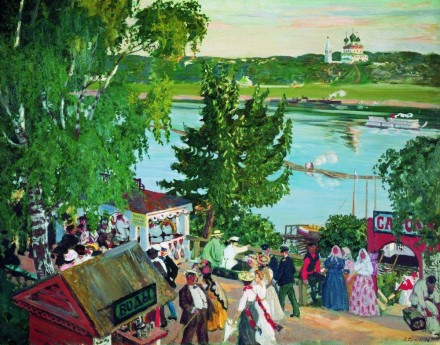
This painting ‘Promenade along the Volga (Romanov-Borisoglebsk)’ was painted by Boris Kostudiev (1878-19270) in 1909. In 1918, Romanov-Borisoglebsk was renamed in memory of the Red Guard I P Tutaev, who was killed in the Yaroslavl revolt of 1918. Tutaev is the home of the Shuvalov Bell Foundry. On the 30th of March this year the bell foundry cast six bells for the bell tower of the Church of the Transfiguration in Turchasovo.
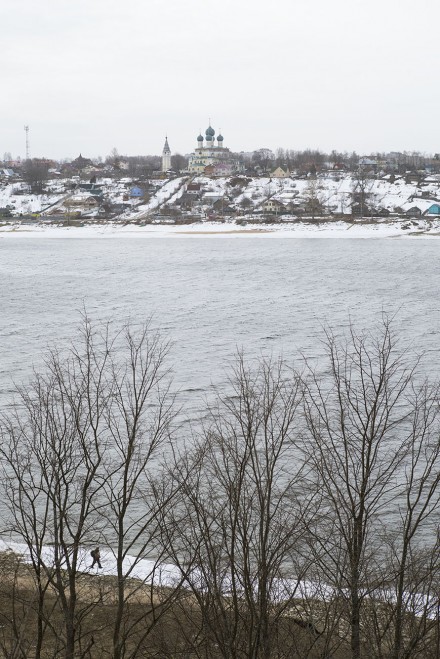
Tutaev March 2015
Alexander Mozhaev wrote the following about Tutaev and bell making for ‘Russian Types & Scenes’. . . The main street on the Romanov side of Tutaev, a town that straddles the Volga upriver from Yaroslavl, leads to the gates of the famous Shuvalov Bell Foundry. There had been no church bell foundries in Russia since the upheavals of the 1930s when the Soviets destroyed both the means and the know-how for producing bells. Nikolai Shuvalov was, until 1992, a gas pipeline engineer. He explains his decision to resurrect the art of bell making in Russia very simply: ŌĆśIn the late eighties, when there was no life left in the pipeline business, I started freighting in fruit and vegetables from the south and managed to make enough money to put some aside. Although there was hardly an intact bell tower in the country I decided to put my money into bells, maybe because no one else was. After ’¼üve or so years of experimentation I started to produce decent bells, then the ’¼éood gates opened and the orders started ’¼éowing in.ŌĆÖ
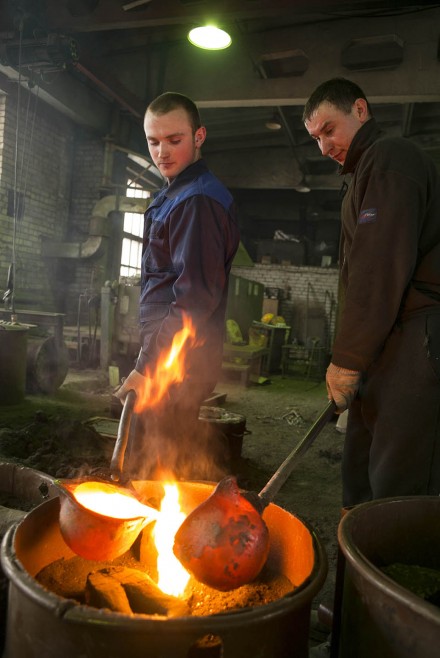
Pouring the metal
To a layman, the manufacture of a Russian bell looks impossibly complicated ŌĆō like writing with both hands while looking in the mirror. A bell is like sculpture cast in metal, it has to be fashioned, or rather, its opposite has to be fashioned with great skill and precision. Each bell is made from scratch and each bell has its own unique sound.
The knowledge that most of us have about the mysteries of Russian bell casting is nil, and any knowledge we do have comes from the bell making chapter in TarkovskyŌĆÖs extraordinary ’¼ülm Andrei Rublev. A young lad, who claims to have inherited the secret of bell making from his father, is commissioned to cast a colossal bell for the Grand Duke. The undertaking is on a gigantic scale. He tells the agents of the Prince ŌĆśWe need more silver, tell the Prince not to be so stingy, we need another half poodŌĆÖ ŌĆō ŌĆśIf we donŌĆÖt youŌĆÖll get a beam, not a bell.ŌĆÖ ŌĆō ŌĆśWho knows the secret of bell bronze? You or me?ŌĆÖ As an aside, to his assistant he laughs and says ŌĆśIŌĆÖm going to shake a load of silver out of the Prince.ŌĆÖ
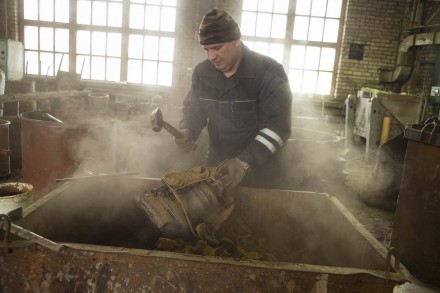
The cast is broken open
No expense is spared it seems! But it isnŌĆÖt silver being thrown into the furnace, it is tin. Shuvalov explains, ŌĆśBronze is an alloy of copper and tin, and at that time Russia imported much of its tin from England. But the English, as always, found a ruse to maximise their pro’¼üts and they would only sell tin in the form of tableware ŌĆō thereby adding a hefty premium. So TarkovskyŌĆÖs scene is pretty accurate, with its armfuls of white metal utensils being thrown into the furnace. The bell founders ’¼éeeced their clients by demanding more and more silver. This was kept safe in the ’¼ürebox and later raked out with the ashes.ŌĆÖ
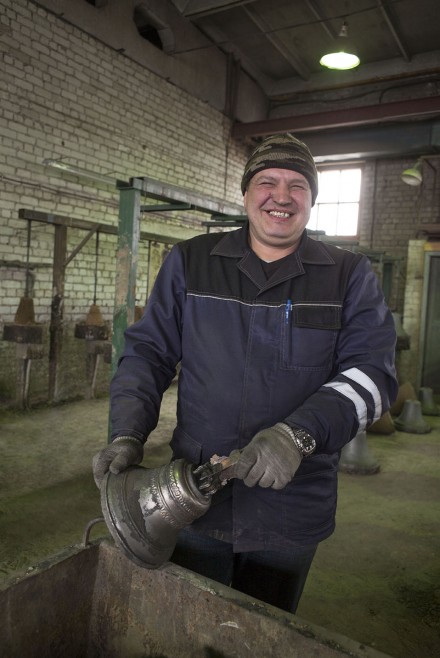
One of the newly cast bells
Maybe this story is nonsense but there is an old Russian saying ŌĆśPouring bells!ŌĆÖ (ąÜąŠą╗ąŠą║ąŠą╗ ą╗čīčÄčé)┬Ā which means telling ’¼übs and lies. As the old custom tells, creating a buzz in the crowd by spreading scandalous gossip during the casting, guarantees that the bell will sing!
Alexander Mozhaev, 2014
I’m pleased to record that much scandalous gossip was spread during the casting of the Turchasovo bells, in fact many words where used which Natasha Shalina, our interpreter from St Petersburg, refused to translate. A clue was given by her flushed cheeks and giggles!!
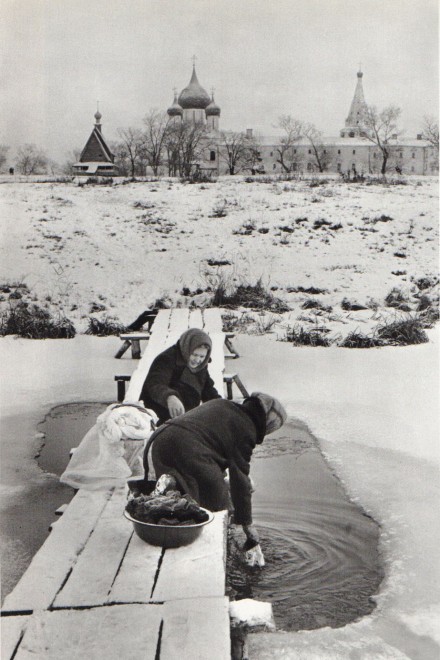
Washerwomen by the river Kamenka, Suzdal ŌĆō early 1970s
This photograph has been scanned from my copy ┬Āof ┬ĀHenri CartierŌĆōBresson’s book ‘About Russia’ published by Thames and Hudson in London in August 1974 and no doubt bought by me in London in August 1974. ┬Ż6.50 when ┬Ż6.50 was ┬Ż6.50. Cartier-Bresson made three trips to the Soviet Union, his book, published in 1955 in England as ‘The People of Moscow’ was the ┬Āresult of his first trip in 1954, the trips in 1972 and 1973 resulted in ‘About Russia’.
Last week I bought a pristine copy of ‘Mosca’ the Italian edition of┬Ā’The People of Moscow’ in the wonderful bookshop Hoepli in Milan. They had several copies, no doubt they had recently been discovered in a box at the back of a cupboard. ‘Mosca’ cost me 100 euros ŌĆō ┬Ż4.25 in old money (1955) so not a bad price. That got me looking at my Cartier-Bresson books on my return and ‘About Russia, turned up this photo of a wooden church. I’m pleased to say that it still exists. It is the Church of St Nicholas (1766) from the village of Glotovo. It was transferred to Suzdal in 1960.
Today I posted the last copy of ‘Wooden Churches ŌĆō Travelling in the Russian North’ to Rua Vergueiro, S├Żo Paulo, Brazil.
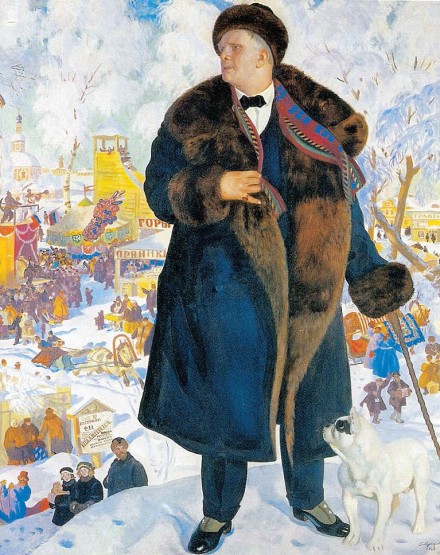
Feodor Chaliapin painted by Boris Kustodiev (1878-1927) 1922
Last weekend I went to Vienna to see a performance of the opera Khovanschina by Modest Mussorgsky. It’s an opera I’m always keen to track down. The music and the story are very powerful but apart from that I’m always intrigued to see how the final scene will be presented on stage. A scene where a community of Old Believers martyr themselves in a burning church rather than give themselves up to be slaughtered by the czars troops. Not an easy thing to stage.
I had great hopes for this production as it was directed by Lev Dodin. But despite a set made of charred timbers, no ‘coal effect fire’ lighting was attempted and no wind machine blown red silk used. And the protaganists and chorus were slowly lowered below stage, not raised to heaven. Apart from that the singing was great and the Vienna State Opera Orchestra conducted by Semyon Bychkov sounded wonderful.
Another plus was an English language programme where I came across this quote from Chaliapin ‘As a composer, Mussorgsky sees and hears all the scents of a garden or a tavern, and describes them so strikingly and persuasively that the audience finally hears and shares those aromasŌĆ” That is realism, to be sure, but a realism of a special kind, such as we are familiar with from Russian peasants who with plain timber and simple axes build a church whose artistic ornamentation surpasses even the best inlaid work.’
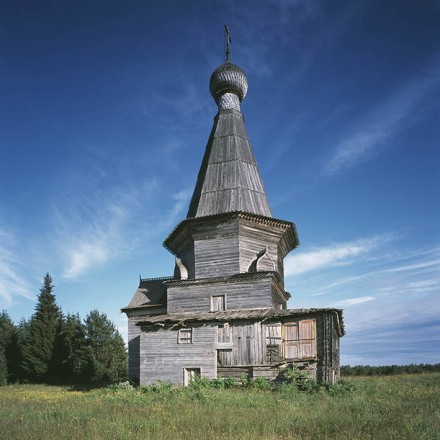
The Church of St Nicholas, Purenema, Archangel Region, July 2012
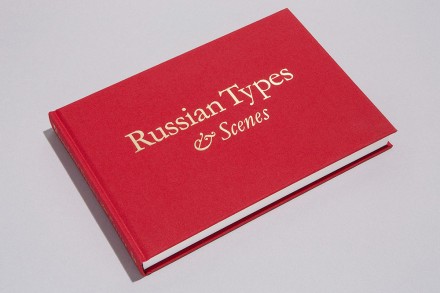
Preface
ŌĆśMy chief hope for this book is that it may help to make others think of Russia, not as an abstraction, not as a unit, but as a very large number of very interesting human beings, most of them lovable.ŌĆÖ ŌĆō In a Russian Village Charles Roden Buxton, Labour Publishing Company, London 1922
Russian Types & Scenes is a companion volume to Wooden Churches ŌĆō Travelling in the Russian North. Photographing the churches was exciting and exhilarating but it was also frustrating. My camera was attached to a tripod. I faithfully gave my attention to the tripod and its camera, adjusting the position, the level, the height, the framing, the focus, the shutter speed and the aperture while brushing away snow, rain and mosquitoes from the lens. I knew that if I was to move away for a moment the sun would burst through the clouds; a dog, a cow, a horse or a wonderfully exotic Russian would hove into frame. Meanwhile all around me extraordinary everyday things were happeningŌĆ”
I did take some photographs away from the tripod but our schedule was tight and there was little time to loiter ŌĆō a prerequisite for reportage photography. The majority of the photographs in this book have been taken since the publication of Wooden Churches. IŌĆÖve continued to travel to the Russian North with friends, journalists, restorers, students and ’¼ülm makers.
On most of these trips IŌĆÖve left my tripod at home or at best kept it deep in my luggage, to be called upon to photograph a church I havenŌĆÖt photographed before. I now travel with a light handheld camera. The schedules have been slightly less demanding, although no less adventurous, but more importantly with less to carry and to take care of, there has been more time and energy to loiter.
Russian Types was the generic title the St Petersburg photographer William Carrick (1827-78) gave to the photographs he took of tradespeople, peasants, priests and of’¼ücials in his studio and later to the scenes of Russian life taken in the ŌĆś’¼üeldŌĆÖ. This genre became very popular and was taken up by many photographers, artists and postcard publishers well into the 20th century.
A story from Solzhenitsyn explaining the shortcomings of colour photography follows in lieu of an introduction.
Richard Davies, London, June 2014
~
Along side the photographs there are texts by the Moscow architectural historian Alexander Mozhaev, together with the insights of writers, artists, and poets.
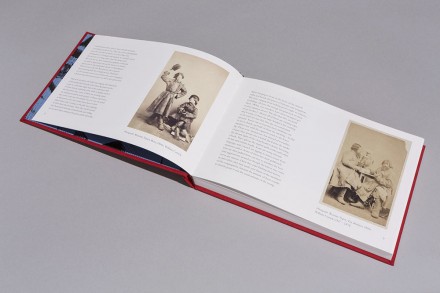
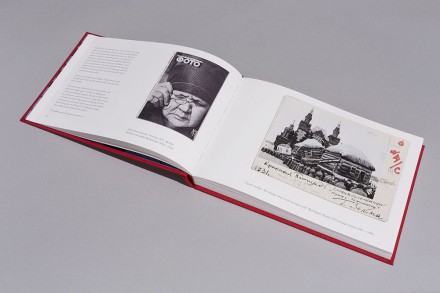
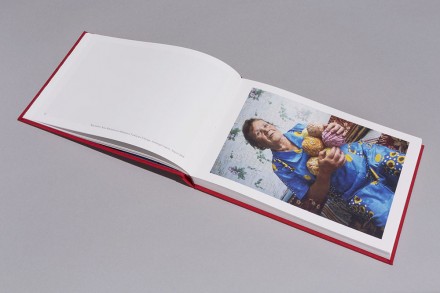
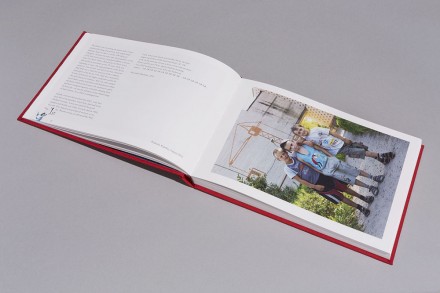
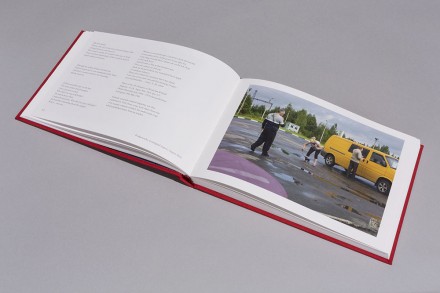
The ’¼ürst bread!
Tell me, who of you has never enjoyed eating a slice of bread from the new harvest?
How nicely it smells. ItŌĆÖs a smell of the sun, of fresh straw, and most importantly, of the combine driverŌĆÖs hands soaked in kerosene.
Five Romances on Words from Krokodil Magazine, Ōä¢ 24, August 30th, 1965, opus 121┬ĀDmitri Shostakovitch (1906-1975) ’¼ürst performed Leningrad, 28th May 1966
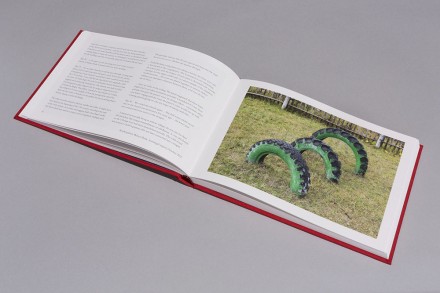
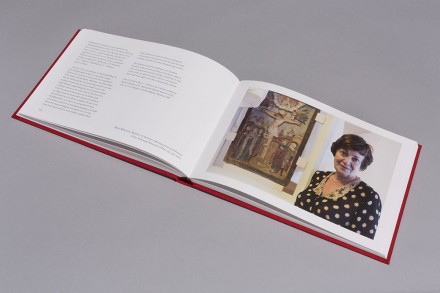
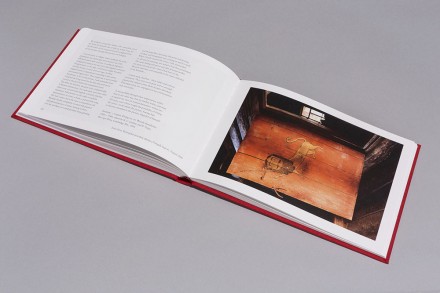
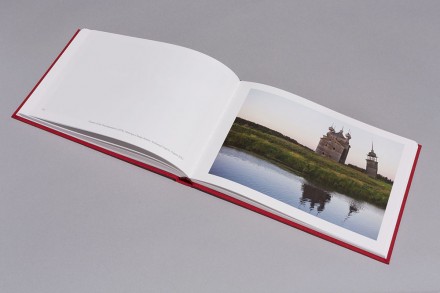
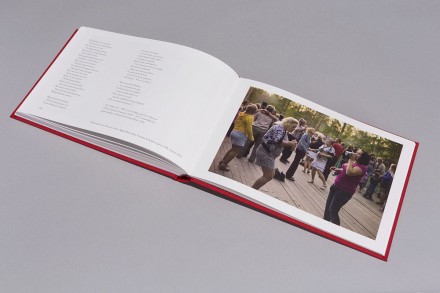
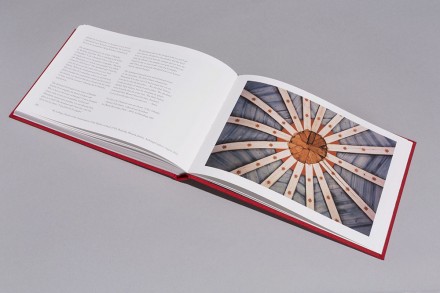
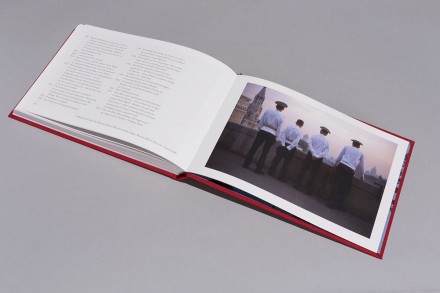
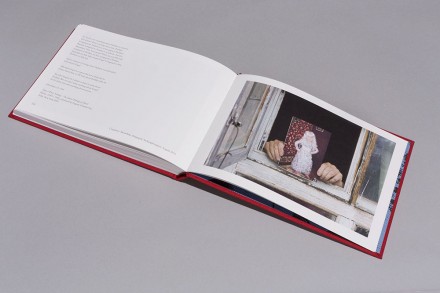
ItŌĆÖs hard to say something about Pushkin to a person who doesnŌĆÖt know anything about him. Pushkin is a great poet. Napoleon is not as great as Pushkin. Bismark compared to Pushkin is a nobody. And the Alexanders, First, Second and Third, are just little kids compared to Pushkin. In fact, compared to Pushkin, all people are little kids, except Gogol. Compared to him, Pushkin is a little kidŌĆ”
Today I Wrote Nothing ~ The Selected Writings of Daniil Kharms (1905-1942), translated by Eugene Ostashevsky, Ardis, New York 2009
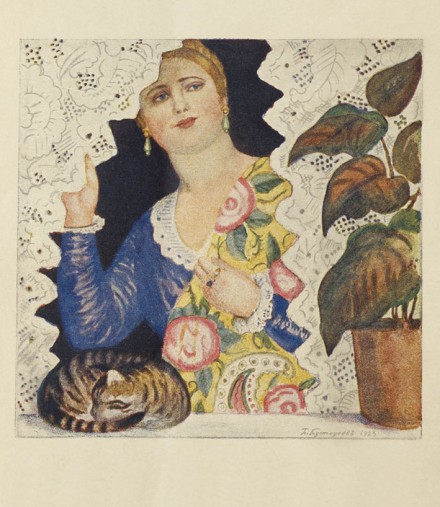
Merchants Wife, Boris Kustodiev (1878ŌĆō1927), published Akvilon1923
http://www.pushkinhouse.org/events/2014/10/7/pushkin-club-richard-davies
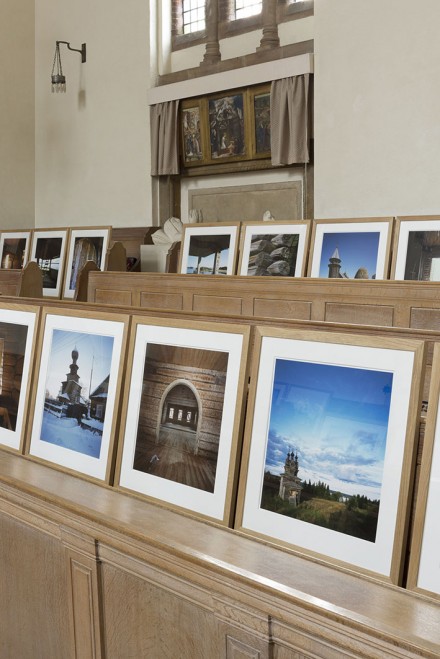
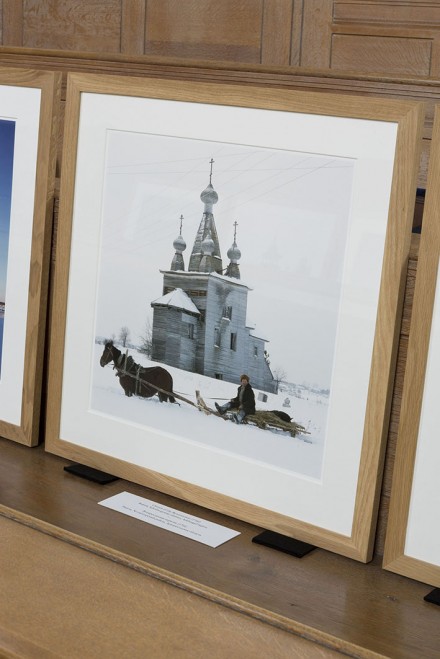
The Oxford Photography Festival runs from the 14th September ŌĆō 5th October 2014. Wooden Churches is being shown in the┬ĀGilbert Scott chapel at Lady Margaret Hall, Norham Gardens OX2 6QA
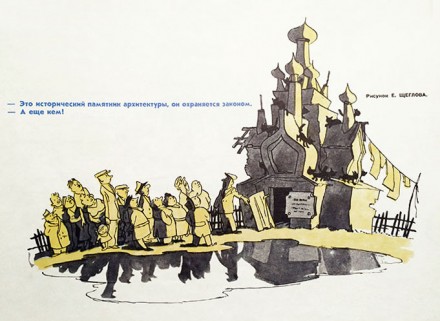
ŌĆō This historic architectural monument is protected by law
ŌĆō ąŁč鹊 ąĖčüč鹊čĆąĖč湥čüą║ąĖą╣ ą┐ą░ą╝čÅčéąĮąĖą║ ą░čĆčģąĖč鹥ą║čéčāčĆčŗ ąŠąĮ ąŠčģčĆą░ąĮčÅąĄčéčüčÅ čŹą░ą║ąŠąĮąŠą╝
ŌĆō Nobody else?
ŌĆō ąÉ ąĄčēąĄ ą║ąĄą╝?
Russians have lost all hope of getting any help from government. They are beginning to take responsibility themselves, and this includes responsibility for their cultural heritage.
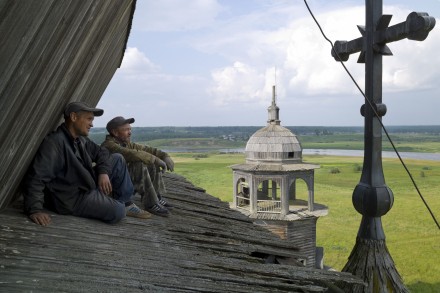
Two villagers take a break from restoration work to admire the view from the┬ĀChurch of the Transfiguration in the village of Turchasovo
http://www.opendemocracy.net/od-russia/alexander-mozhayev/ring-out-new-bells